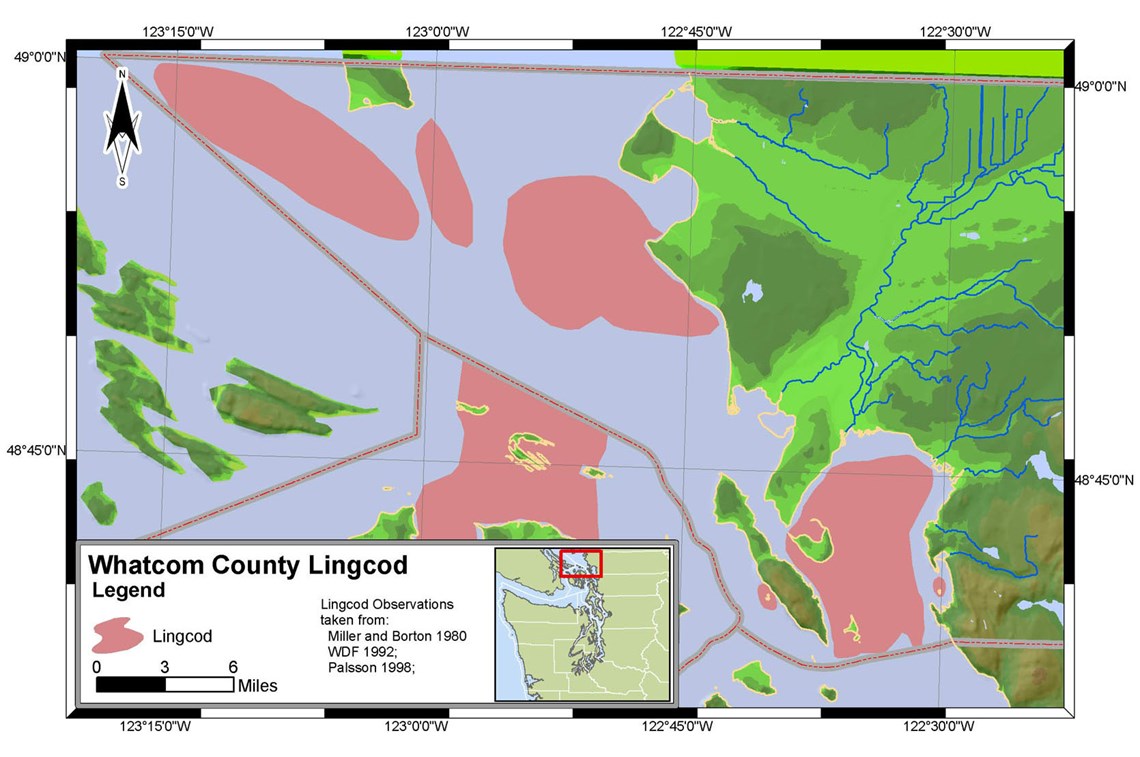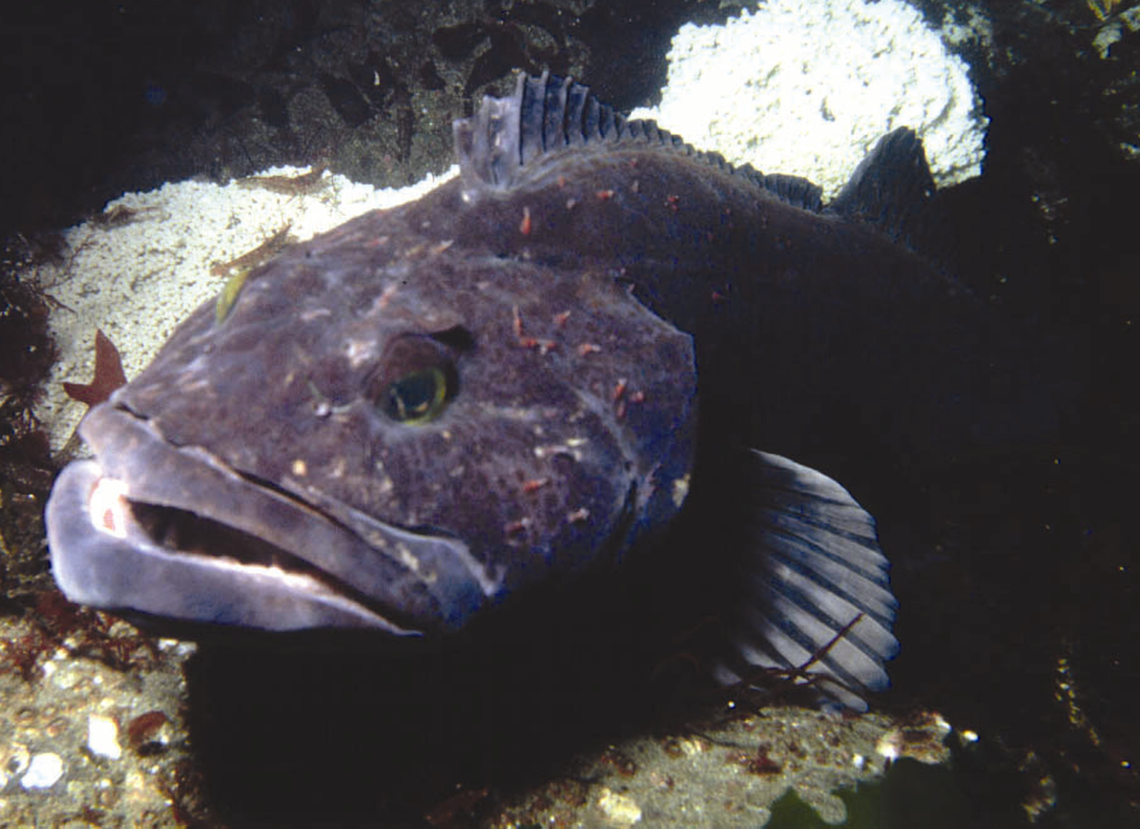Distribution
Lingcod are found from Alaska to northern Baja California in deeper water and move to shallower water when breeding. In Whatcom waters, adults are found in rocky habitats in Bellingham Bay, around the reef at Point Roberts and on Alden Bank, and along the shorelines of Birch Head, Cherry Point, and Lummi Island.

This Whatcom County map shows areas where lingcod have been found. This map is based on data compiled by Miller and Borton, Geographical distribution of Puget Sound fishes (1980); Washington Department of Fisheries, Technical Report 79 (1992); and Palsson et al., Puget Sound groundfish management plan (1998). The map was created by People For Puget Sound.
Economic Value
Lingcod are prized for their firm flesh and are sought-after favorites of commercial and recreational fishers and spearfishers. Lingcod are harvested by native tribes for subsistence and cultural purposes and a very limited commercial harvest continues in the Strait of Georgia. They are caught by sport fishers using hook and line and divers using spears and sometimes caught inadvertently when salmon fishing.
Reproduction
Female lingcod reach sexual maturity in about six years and lay large masses of eggs from late fall to early spring in rocky nests in areas where there are strong currents. Male lingcod clean these eggs and guard them against predators until they hatch in six weeks. Males are very aggressive and territorial during this time. Larvae swim in the water column and, as they grow, juveniles move to shallow bottoms near land, then to deeper rocky reef areas as more sedentary adults. Lingcod live to about 15 years with reproductive capacity increasing with age and size.

Ecology
Lingcod are voracious predators (“ophiodon” means “snake-toothed”), feeding on other fish, crabs, and octopi. Juveniles feed on plankton and are sometimes preyed upon by adult lingcod. Once settled as adults in their rocky habitat, lingcod are sedentary, making them an easy target for commercial and sport fishers.
Current Status
- Strait of Georgia and San Juan Islands lingcod populations have rebounded from their very poor condition in the mid-1990s and are currently in above average condition.Commercial fisheries targeting lingcod have been restricted to maintain stock health, and recreational harvest is limited to a six-week springtime fishery and a daily limit of one fish no smaller than 26 inches and no longer than 40 inches.
- Commercial fisheries targeting lingcod have been restricted to maintain stock health, and recreational harvest is limited to a six-week springtime fishery and a daily limit of one fish no smaller than 26 inches and no longer than 40 inches.
Sources
- Pacific States Marine Fisheries Commission
- Marine Wildlife of Puget Sound, the San Juans, and the Strait of Georgia, Steve Yates
- 2002 Puget Sound Update, Puget Sound Ambient Monitoring Program
- 2002 WDFW Sport Fishing Regulations
- Marine Resources of Whatcom County, Anchor Environmental